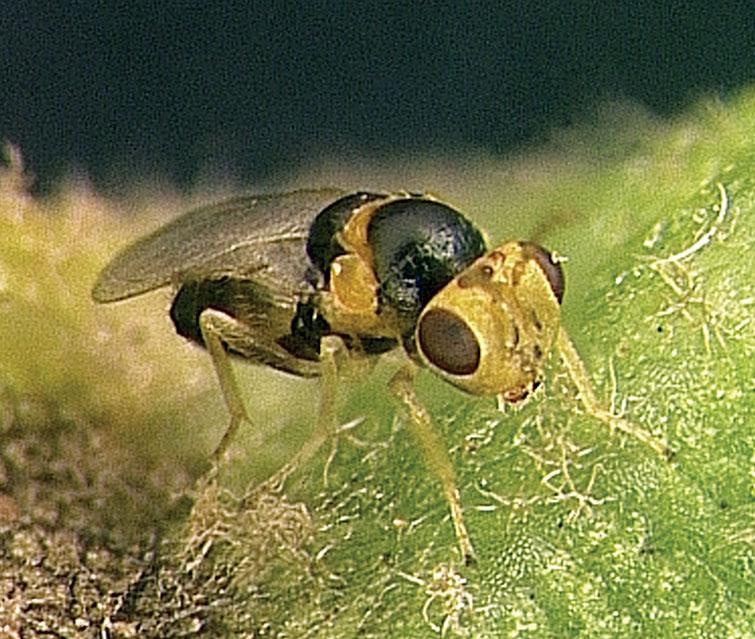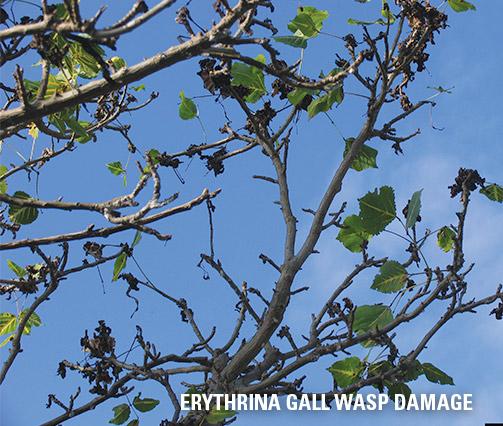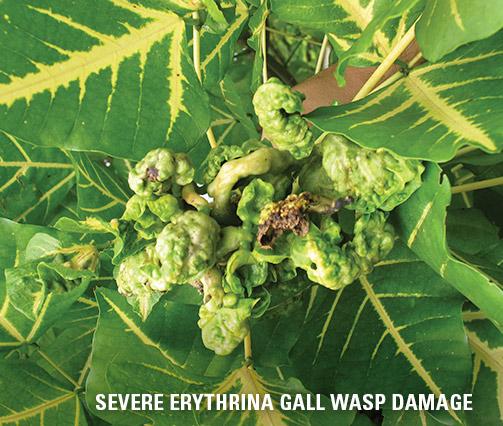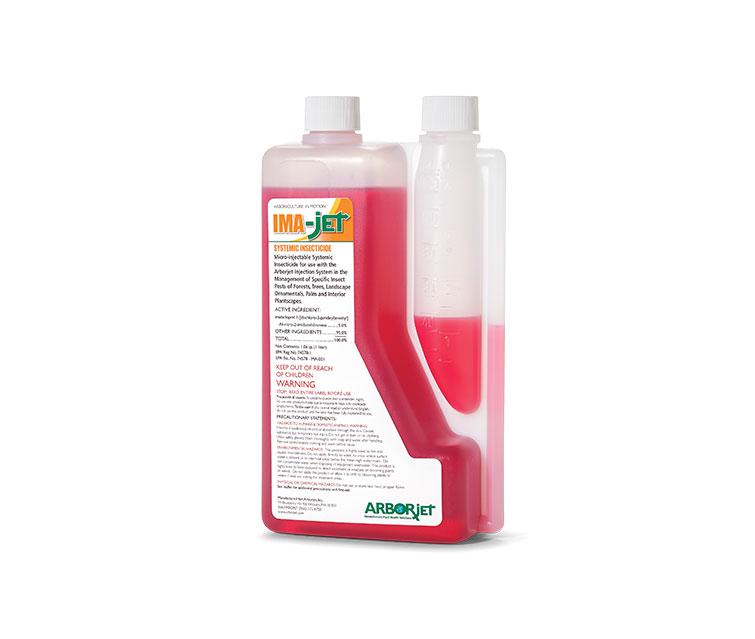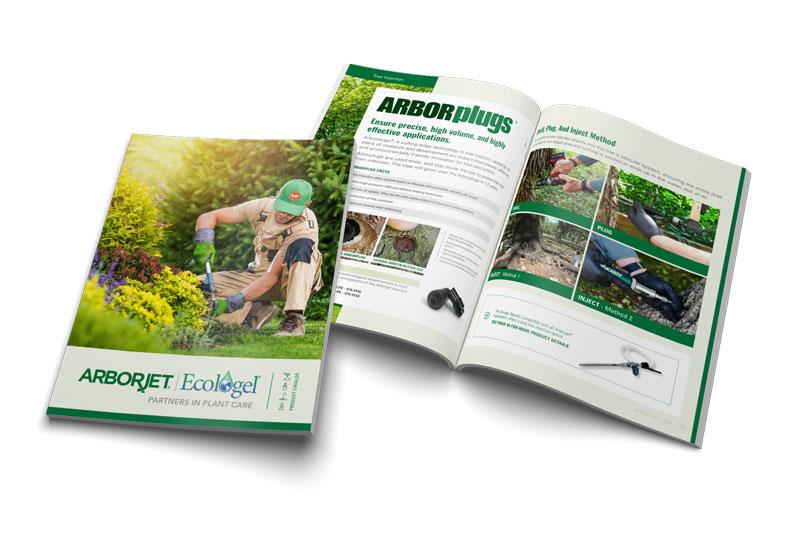Erythrina Gall Wasp
The Erythrina Gall Wasp (EGW) is an exotic pest of the Wiliwili tree. Common tree names include tigers claw, Indian coral tree and Wiliwili-haole.
The Erythrina Gall Wasp (EGW) was first discovered in Hawaii in 2005. Populations of WiliWili or Erythrina spp. occur in Hawaii, California and Florida. EGW completes its life cycle in as little as 21 days. It is a destructive, exotic pest that may kill trees in as little as two years. If trees are at risk of EGW infestation, inspect trees on a regular basis, especially the new foliage. Look for swelling (galls) in leaf tissue and in twigs. It is our recommendation to treat to protect trees in advance of an infestation or as soon as possible following EGW detection.
Common Symptoms
Erythrina Gall Wasp is an exotic leaf and twig galling wasp that attacks WiliWili trees. The developing EGW larvae induces galls in tender leaf and stem tissue. Unchecked infestations cause leaf deformation, reduction in growth, defoliation and tree death.
Treatments
Research studies were conducted independently in Hawaii by the University of Hawaii and the USFS to evaluate the efficacy of Arborjet’s IMA-jet® (5 % imidacloprid) systemic insecticide for treatment of Erythrina Gall Wasp. Trees that were systemically treated with IMA-jet effectively protected from EGW in both the ornamental landscape and in native, dry upland sites.
When To Treat
For optimum results, apply IMA-jet prior to infestation. Also apply when insects are infesting and feeding upon the tree.
Product uptake is dependent upon the tree’s transpiration. Transpiration is dependent on a number of abiotic and biotic factors, such as soil moisture, soil and ambient temperature, and time of day. For optimal uptake, apply when soil is moist, soil temperatures are above 45 degrees F, ambient temperatures are between 40 degrees to 90 degrees F, and during the 24-hour period when transpiration is greatest, typically before 2:00 PM. Avoid treating trees that are moisture stressed or suffering from herbicide damage. Applications to drought or heat-stressed trees may result in injury to tree tissue, poor treatment and subsequent control.
What To Expect After Treatment
Dosages are designed for insect control and retreatment is generally not necessary during the year after initial treatment. Monitor insect activity to establish a damage threshold for retreatment. Repeat applications as necessary. Studies have demonstrated that label use rates of IMA-jet provided at least 13 months of control of EGW. Reduction of leaf and twigs galled were observed following systemic tree injection treatment. Treating with IMA-jet does not remove the existing galls (symptoms), but the active ingredient moves into the soft tissues where larvae feed to affect control.
References And Photo Credits
Main photo and pupae inside gall taken by M. Tremblay, State of Hawaii Department of Agriculture “New Pest Advisory” bulletin.
Damage photos taken by Albert (Bud) Mayfield, Florida Department of Agriculture and Consumer Services, Bugwood.org

